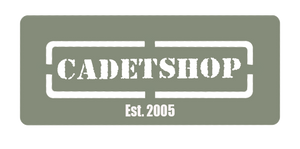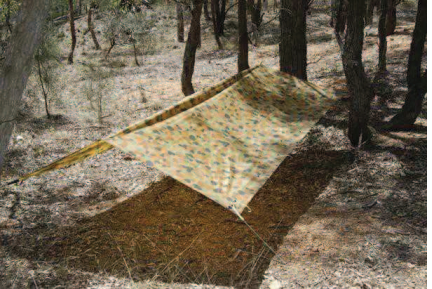An individual shelter (Hootchie) is a light weight, easy to assemble shelter. It is a single, plastic sheet with a disruptive pattern on the surface, and is designed to be connected to another member’s Hootchie if the buddy system is used.
Alternatively, it can be sited and constructed as single cover. Hootchies can be assembled in a variety of ways depending on the situation. However, the most effective ways are as follows.
Lean-to. The lean-to is ideal for hot climates as it provides a greater area for shade and passage for cooling breezes. The problem with this construction is that heavy storms or winds can easily destroy the shelter.
The Inverted V. The inverted V, is a good overall design. It needs to be erected closer to the ground than the lean-to, to allow the sides to counter the effects of wind and rain, so this does not always allow the maximum cooling effect of any breeze. When erected, it must be tight enough to repel the elements and not allow the pooling of dew or rainwater.
The Double Inverted V. The double inverted V, is used for two or three people. Shelters are joined together using the male and female clips located on the longest edge of the single shelter. The construction is similar to the inverted V making sure that the bottom shelter is tied off through the loop at the apex, to a tree. This prevents gaps occurring between the clips. Keep the sides as straight as possible, which aids water runoff and prevents water pooling. A Member should also be aware that if there is any object touching the underside of the shelter during rain, it causes a leak at that point. Water can be collected during rain by placing a water bottle or cup canteen steel under run-off areas. On no account should this type of shelter be constructed with the loops on the underside.
Watch our shelter and hoochie videos here;
https://youtube.com/playlist?list=PLwqvG9z1G-Q2j6WRqOlP0FvldKSkH7D91
